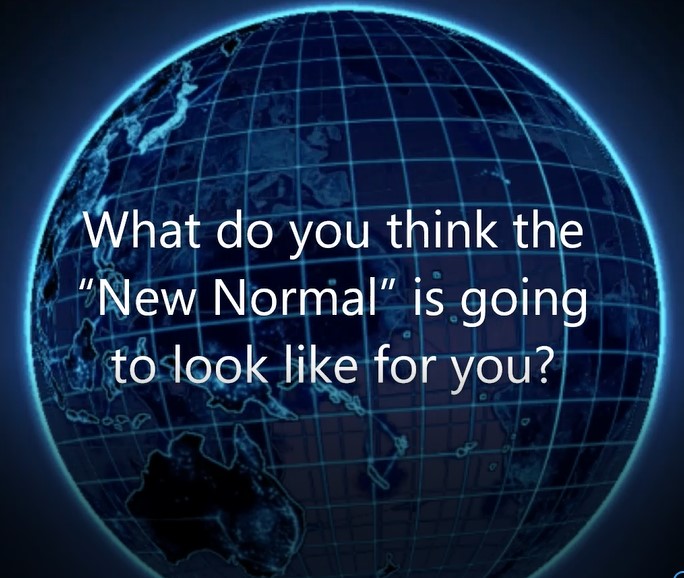
First, a bit of context… 12 years ago, we went through a global financial crisis. I remember how we discussed at Axialent the impact of the crisis in organizations, people’s emotions and their effectiveness to give their best at work. At the time, one of my most brilliant mentors, Axialent founder Fred Kofman, said something that stayed with me: People will suffer Survivor Syndrome. He then developed this idea into a short article, and I think now is the time to bring back the “Survival Syndrome” issue to raise our consciousness on what people might be going through these days. Not only might people have lost someone due to the virus, but there is also a feeling of loss whenever we need to let go of the past, of what we were used to. And also when our organization goes through restructuring and we have to let go of colleagues and friends who are part of our community or business family. I call this organizational trauma in times of crisis.
My business partner, Thierry de Beyssac, and I, invite you to read the following article to raise awareness and build effective actions to deal with people’s struggles now. Everyone wants to be at their best, but often unconscious emotional stress gets in the way. We want to help everyone understand some of the hidden and unspoken dynamics we might be facing today and what is it that you can do to dissolve this.
Fran Cherny
————————————————————
The Survivor Syndrome (in times of coronavirus)

Many war veterans realize that their psychological scars are much deeper than any physical pains, and that these will take much longer to heal. The joy and relief of returning home is sooner or later impacted by the things they remember; things they saw, experienced, felt, or feared come home with them. Stories from this past might invade their nightmares for years—perhaps even the rest of their lives. Beyond the happiness of feeling free and back home, the horror and the loss stays.
Psychological studies have found one thing in common in all these great stories of liberations and family reunions: survivor syndrome. One of the biggest emotional weights that those who made it through alive must bear is the guilt of surviving. “Why me and not my friend?” “Why am I alive when so many of my loved ones didn’t make it?” “Do I have the right to live when so many more worthy than me are dead?” Depression and other mental illness, and a great number of suicides are an outcome of not finding a way to deal with these questions.
Organizational trauma in times of crisis
Although organizational circumstances are not comparable with any of these extreme life or death situations, at a subconscious level there are some things that our mind starts thinking in a very similar way. For one’s self‐image and ego, the loss of a job has a deep impact in our self-esteem and how we are perceived by others.
When downsizing, many companies invest in psychological and outplacement counseling for those who have been let go. This occurred after the 2008 financial crisis, and we now see this as a common practice in most large organizations. But what about the “survivors”? What about those who now have to carry more responsibilities in a “leaner and meaner” organization? Who helps these people cope with some of the guilt and stress of remaining when some of their colleagues and friends have gone? People are asking: Why did I “survive”?
Some real situations
It is easy to think that those who still have a job should feel reassured, consider themselves lucky, and be ready to give the best of themselves. This might be very true for some, but also a bit more complicated for many others. Not facing a possible organizational trauma could prove to be gross negligence for your business.
In the past several weeks we have seen many people in coaching sessions, leadership meetings and virtual training sessions trying to talk about this and finding it hard to find the right words. We have seen a case of a company who decided to cut 40% of their workforce as their industry has been deeply affected. We heard from some of the people still there, who are working double the hours, and still investing a lot of time in connecting with their colleagues who are gone now, checking on them. We know of one employee even offering to give up 50% of their salary so they can offer a 50% job to someone else, as a way to take care of a colleague they valued a lot, which is an amazing gesture of generosity, but that has much more implications when the company does not know how to respond to these initiatives. All this takes time, energy and emotional resilience, and people don’t know how to deal with this.
Paying attention to the hidden dynamics
In the midst of the current global crisis, we are seeing a deep impact not only at a health and an economic level, but also at a mental health level. With so many companies of all sizes impacted by the coronavirus confinement and restrictions, and with the high level of uncertainty of the future, it is important to also take these work‐force survivors into consideration and help them to be at their best. Yes, many people have lost their jobs and we should definitely connect with them and support them emotionally and financially. But let’s also be aware that many others have kept their jobs and in a different way, they are struggling to. Yes, people are being supported by their employers to deal with technology issues, how to effectively work from home and many other things that are definitely needed, but we are seeing very little attention being given to the emotional issue created by survivor syndrome.

Why do we need to also focus on this when we have so many others issues? Because these are the employees that will carry us through the crisis, and their needs must be met as they face difficult situations, many times expressing symptoms of guilt, stress and fear. And many worry they could be next as there’s no guarantee that layoffs will not continue.
Our invitation is to at least consider it, because this might be a hidden issue affecting your employees’ state of mind and their capacity to be at their best. It is always better to check, to connect with people’s real concerns and fears, than to pretend that nothing is there, creating an “undiscussable” (something we all know exists, but no one really talks about openly, which creates even more tension).
Leadership responses will make the difference
We are raising this because with the current context and level of challenge everyone is facing on all levels, we perceive a risk that many managers might use “passive aggressive” or “passive defensive” behaviors, based on how our primal brain works when we are stressed and in really challenging circumstances: the flight or fight response. This could be expressed in various ways, for example by saying “Come on, let’s focus on the future, let’s move on” when others are not ready, or by just not talking to and connecting with colleagues as a way to avoid “rocking the boat”, or by feeling the need to connect emotionally with our own vulnerability and fears.
If these dynamics are happening today, we believe things will get much more difficult soon when we face the expected next phase of “people and business rightsizing“ that many are already calling, maybe too quickly, the “new normal”.
Responding to the challenge in a constructive way
So how can we break this vicious circle? How can you help your employees get back to their best and grow the power of adaptability and resilience they, and your organization, need now more than ever?
Axialent has been working with organizational culture change, executive learning and team effectiveness for a long time now. During difficult times and crisis, people usually do not respond as they normally would. There is a layer of emotional challenges that blocks many people’s ability to face reality and to embrace new ways with agility and joy. And unless worked on, it is hard for many people to connect with the opportunity and explore how they can grow, bringing the best of themselves for them, their colleagues and even, for those who are not around in the team anymore.
As a way to start helping you, and leaders in your organization, support your employees to be at their best, we offer below some specific actions. These will help people move on, with resilience, integrating their feelings and refocusing on what they can do to make the situation better for everyone:
1. Put things “on the table”. What remains “under the carpet” or hidden, exists anyway and becomes a source of tension that will add unconscious “weight in people shoulders”. It is critical to create a safe space where people can talk about their feelings, engage in a constructive dialogue and build a collective emotional intelligence.
2. Meet people where they are. With empathy, compassion and non‐judgement, let’s allow everyone to be where they are before we invite them to move on. Don’t ask them to follow and meet you where you are, but walk towards them and let them know you are in it together. Show people it’s ok to feel what they feel. And recognizing our own vulnerability first is a strength that will allow people to move on faster and from a good place.
3. Ask people what they need to be at their best, inviting them to be players and gain control. People are often trapped in their own victimhood and find it hard to connect with what is in their control to make things better. We can gently invite them to connect with that part of themselves. It is always impressive to see how improving self-confidence and self-esteem is one of the most powerful ways to gain the resilience you need to face any crisis.
4. Create a future together. In the current uncertain times, it is critical to create a vision for what we can create together, in a way that strengthens our capacity to adapt. Building scenarios together, and adjusting them based on new information, is an exercise that helps people share possibilities and start working based on them. This helps everyone feel that they are contributing to solving things in each of the three dimensions of sustainable success: business KPIs, the way we work together building trust, and how each of us feel as individuals are aligned to our core values.
5. Gather information about how all this evolves and then act fast. The number one need that both employees and managers have been expressing is to be actively listened to. In today’s world you can leverage technology to gather data (even every day) about what your employees think and feel, and what their general mood is (always using it in a responsible and open way with the people from whom you are collecting the data from). Don’t miss this opportunity to know how your people are doing, and design actions that can meet their emotional needs.
Only from a place of awareness, we can choose how to best respond to each situation. This is the time to help everyone be at their best and each of us can play a key role in making this happen.
First published by Thierry de Beyssac and Fran Cherny in LinkedIn













 Axialent
Axialent
 Moreover, d
Moreover, d




